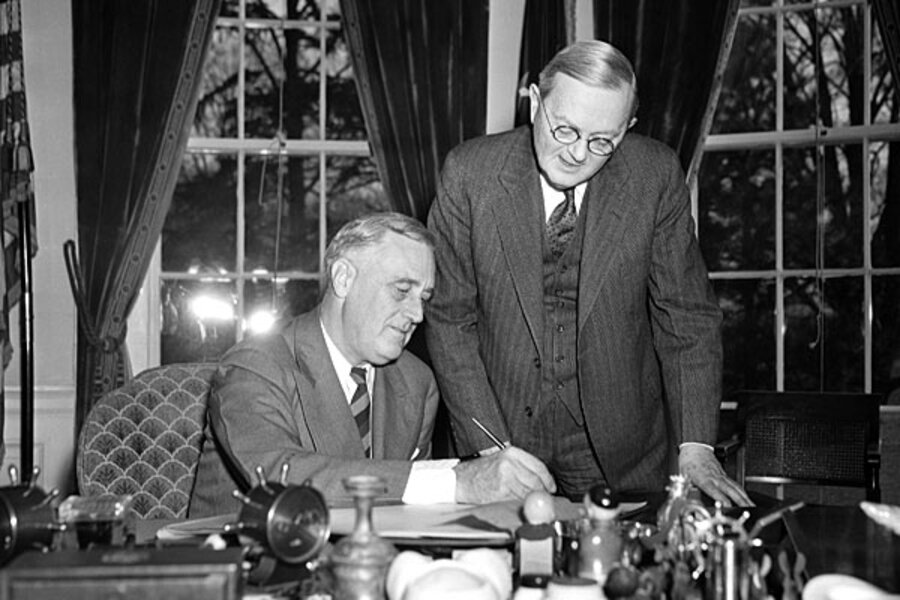1940 Census data: A treasure trove for con artists?
Loading...
| New York
The release of the 1940 Census data is a treasure trove of information for historians and Americans who want to know more about their genealogy.
But is it also going to be a toy store for con artists and identity theft thieves?
Some computer-security experts are concerned that release of the information may give those with less than pure motives an opportunity to defraud. Senior citizens – there are some 21 million Americans still alive from the 1940 Census – are often the victims of scams.
The worry is that they may be conned by people who learn personal information. But the information release may also be pertinent to even younger Americans, since many banks use security questions such as mother’s maiden name and the street you grew up on.
“This is real data,” says IT security consultant Jeff Farr, president of Farr Systems in Dallas. “It gives identify thieves the chance to legitimize, to put together a picture, a timeline which can be used to manipulate victims into giving data.”
“The next thing you know they are going shopping on your credit card or filing a tax return with your information,” he says.
The US government official who is most concerned about identify theft, Maneesha Mithal, associate director of the FTC’s Division of Privacy and Identity Protection, was not consulted about releasing the data.
“Anytime there is more information about us, whether it’s on social-networking sites or public information, there is an increased risk of identity theft,” says Ms. Mithal. “Certainly there are benefits and risks to releasing the data.”
In 2011, the Federal Trade Commission reported that identify theft was the top consumer complaint. Of the 1.8 million complaints to the agency, 279,156 or 15 percent concerned identity theft. One of the latest scams involves individuals who are filing tax returns of other individuals and collecting their tax refunds with the help of dishonest postal workers.
The actual numbers might be higher. In 2008, the Bureau of Justice Statistics found that 11.7 million Americans, or 5 percent of everyone over the age of 16, had their identity stolen in a two-year period.
The National Archives and Records Administration releases information from the census, which is taken every 10 years, only after 72 years. The prior release in 2002 involved the 1930 census. Although identify theft was an issue then, it was not as prevalent. [Editor's note: The original version of this paragraph contained incorrect information about the process of releasing data.]
The National Archives had no comment.
Mr. Farr, who says he is not trying to be alarmist, says the Census data present con artists with another source of information to paint a picture of a potential victim. Then con artists may go to Facebook or other social media and find yet more information. “That’s when they start to manipulate you into giving them yet more data,” he warns.
He points out that older Americans are less technologically savvy and more likely to get hit with a deceptive e-mail or phone call.
To counter someone trying to get personal information, Farr says individuals can take a few simple steps. For example, if someone calls up and says they are from a bank, he recommends getting their phone number and calling them back. “Then, you call the bank and ask for that person,” he says. “That solves 98 percent of all the problems,” he says.
The FTC’s Mithal advises consumers to secure their data as carefully as possible. “Treat your information as if it were cash,” she says. “Shred all your bills, check your financial statements, make sure your Social Security number is not in your billfold, and get a free copy of your credit report once a year.”







